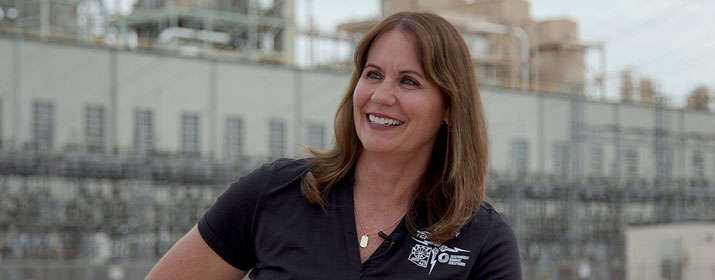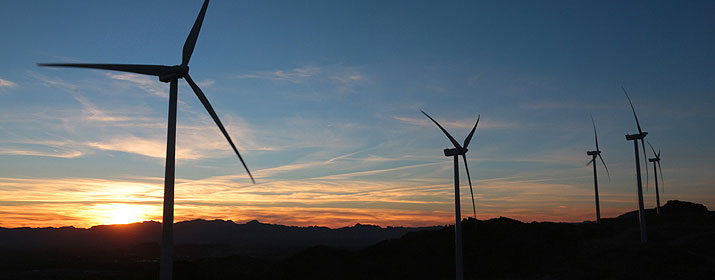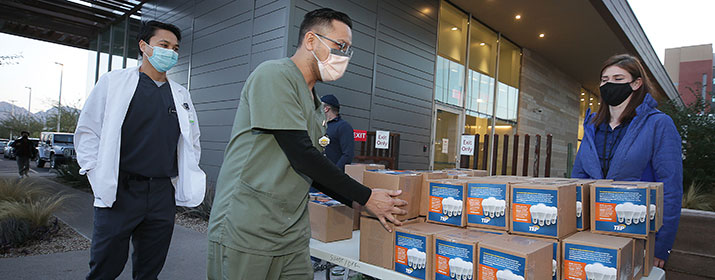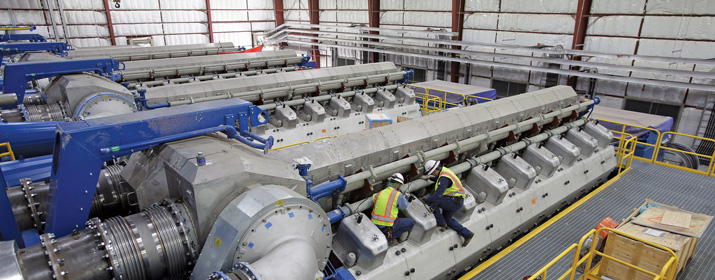
Susan Gray assumed leadership of Tucson Electric Power at a critical point in our clean energy transition, as we resolved to retire our remaining coal-fired power plants and reduce carbon emissions 80 percent by 2035. It was also at the peak of a pandemic that forced a similar revolution in the way we work.
She recently sat down to reflect on her first year in the role and to look ahead to the challenge of maintaining safe, reliable service with cleaner energy resources, in part through technologies yet to be invented.
What’s driving the pace of change at TEP?
We have a responsibility to address climate change, and to do that in ways that don’t compromise on reliability and affordability. Our customers and our community expect action, and we expect it of ourselves, since driving sustainability and doing the right thing are embedded in our corporate values. This is an incredibly exciting time to be in this industry – in part because we’re paving a new path forward. We’re laser focused on innovation because we know we’ll need new technologies and new ways of thinking to get where we’re going.
What are the most challenging aspects of TEP’s clean energy transition?
Our biggest technical challenge will be updating our real-time electric grid to provide clean energy on demand. We have a growing supply of wind and solar energy, but that power isn’t always available when our customers need it. Summer usage usually reaches its peak just as the sun is setting, and we can’t count on the wind to blow all night. We do have some battery storage, but we’re going to need much, much more, along with additional clean energy resources to keep them charged and innovative solutions to the technical hurdles that currently prevent us from powering our grid without fossil fueled resources. Our biggest operational challenge will be doing all that without compromising on the safety, reliability or affordability of our service.
How has the pandemic impacted TEP?
Like other companies, we quickly transitioned as many employees as possible to remote work. But you can’t run a power plant or maintain the grid from your remote office, so we developed new protections and procedures that have allowed many of our employees to keep working safely in person. We also stepped up our charitable giving and expanded the assistance we provide customers who have struggled to pay their bills during the pandemic. We have served this community for nearly 130 years, and our customers are our neighbors. It was important to us to partner with them to come up with solutions that would work.
What were some of the accomplishments you were most proud of?
I’m really proud that we maintained safe, reliable energy while protecting our employees and supporting our customers and our community during the pandemic. And we did all that while bringing major renewable energy projects online. This year we completed Oso Grande, our largest wind farm, and the Wilmot Energy Center, our largest solar array and energy storage system.
I was also really proud that we lived our values. As a company, we’re really focused not just on what we do, but how we do it. With input from our employees and a great deal of discussion, we refreshed our corporate values, which you can see on our website. They guide everything we do, from our day-to-day work to our biggest decisions. One of our core beliefs is that diversity makes us stronger and that our commitment to diversity, equity and inclusion should be reflected in the way we serve our community.
How are you supporting the transition to electric vehicles?
There’s no question that electric vehicles will drive a cleaner future. The transportation sector is the largest carbon producer in our economy, so the cleaner the cars that we have on the road, the faster we can get to fewer carbon emissions. We’re accelerating the development of charging infrastructure to support these zero-emission vehicles, providing public education and supporting fleet conversions as part of a statewide plan to get to 1 million EVs on the road by 2030. This transition also will require additional investment in our grid, including transformers and transmission lines needed to support increased energy use associated with clean transportation.
What’s the hardest part of your job?
Every day I am completely energized about the future we envision – and at the same time, I wrestle with finding that balance. We won’t choose between a clean future and reliable energy, or compromise on affordability. The transition is going to require significant investments, but I hear the customers who say they’re already paying too much for energy. So what’s important is finding a plan that will accommodate all of those needs without making too many tradeoffs. It’s a complex undertaking and it takes commitment and courage in equal parts.
What are you looking forward to this year?
My hope for 2022 is that we can continue to come together to address our community’s challenges. When the University of Arizona wanted to deliver cleaner energy to its campus, we worked in partnership to make that happen. Our partnership offset all of UArizona’s scope two emissions, which are greenhouse gases produced from the generation of energy purchased from a utility provider. When the City of Tucson adopted aggressive climate goals, we were there to support their efforts, including providing charging infrastructure and technical expertise for new electric buses.
Ultimately, this community wants the same thing: clean, safe, reliable, affordable energy. It’s not just a TEP priority. It’s going to take all of us working together to drive the change we want to see.






